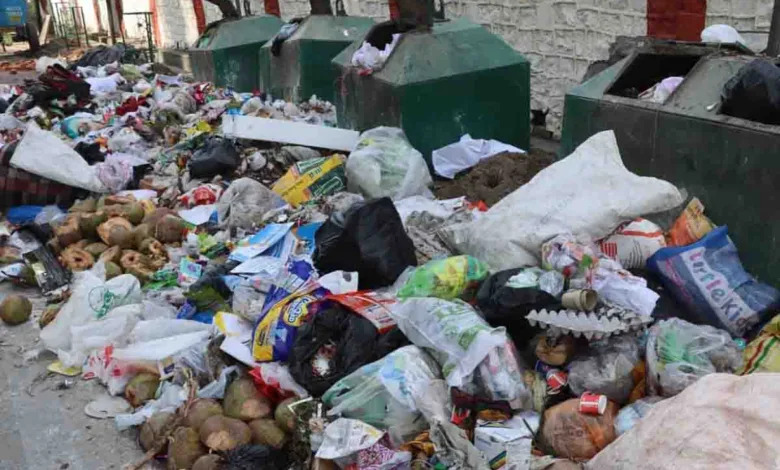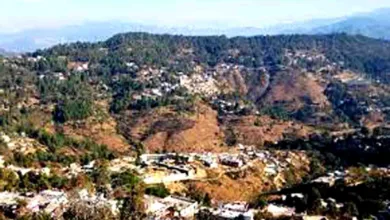In the shadow of towering waste

GUEST COLUMN
 Neeraj Kumar Pande
Neeraj Kumar Pande
A region nestled in the lofty Himalayan peaks, the State of Uttarakhand has had to make several trade-offs in terms of its fragile ecosystem ever since it gained Statehood about more than two decades back. These are not only in terms of a drastic alteration of its endemic climate pattern, but also with respect to its distinctive topography. The saga of concretisation coupled with a spiraling population density in census towns has churned up a profound Pandora’s box in its underbelly.
Today the big challenge is to pick the most daunting ecological concern, among the myriad jostling for attention and place it on top of policy framework and intervention. The haphazard urbanisation which set off in the State post 2000, has nurtured a rather notorious challenge for the residents, authorities and civil society groups alike to grapple with. The burgeoning waste menace has begun threatening, with a spectre of overwhelmingly colossal heaps of uncollected, untreated mountains of waste scattered across pulse points of towns throughout Uttarakhand.
By 2035, the percentage of population in India residing in urban areas will climb upto 43.2 per cent, as per United Nations estimates. While this is not uniformly spread across all Indian States, it is the mountainous States owing to their vulnerable landscape, which have been worst hit by such rapid urbanisation, deforestation, commercialisation and massive turnover of solid waste. The problem gets complex owing to its dual dimensions. On the one hand the gross waste generation output has kept increasing, while on the other, there has been a lack of sustainable management of this waste. Besides, Uttarakhand leads among other States in terms of eco and religious tourism. Hence the waste generation capacity gets further cumulated. The rotting piles of the plastic, polythene, paper, glass and food waste near many tourist spots in Dehradun city are echoing testimonies to this.
With increasing industrialisation in the State, particularly in the sectors of hydropower, ITES, biotechnology, pharmaceuticals and automobiles, the overall consumption expenditure has been swelling at a commensurate ratio as well. Hence, the per capita waste generation across cities such as Haridwar, Roorkee, Haldwani and Dehradun has doubled in just the past decade. The phenomena of waste reduction is yet to click with the inhabitants of these regions. The heterogeneous waste most houses and commercial setups generate, reminds of the crying need to completely phase out single use plastics (SUP packaging). Yet the municipal authorities are perplexed about whom to pin the blame upon. How to impose Extended Producer Responsibility (EPR) on petty retailers and hawkers when the consumers themselves prefer convenience over commitment?
As per another estimate shared by the Central Pollution Control Board (CPCB), by 2030 annual waste generation in India will increase to 165 million tonnes (PIB, 2016). A fair share of this output can be attributed to Uttarakhand’s cities. Back in 2018, the National Green Tribunal had called out the State for its poor municipal solid waste management practices, which were clearly flouting the MSW regulations 2016.
A dismaying reality is also the failure on the part of municipalities to strictly implement the principle of segregation of waste at source. Most households do not adhere to these guidelines and this reduces any scope for systematic waste processing, recycling, reclaiming and reusing – disposal in landfills, land application and energy generation using the caloric content of the wastes. Moreover, the failure to segregate sanitary and electronic waste jeopardizes the health of municipal workers. Although as per the SWM rules 2016, private workers can be employed to outsource the mammoth task of waste management, their adequate access to protective equipment is uncertain.
Reckless dumping of garbage at the current rate in nooks and crannies of towns without appropriate scientific treatment, has also been imposing a massive requirement of landfill area per year. Added to this need is the extra investment in transportation, recycling and waste to energy conversion. Let’s remember that none of these is a carbon neutral process. Another grey area in this context is the fact that municipalities do not consider all areas. We talk about the UN Right to the City while stressing upon the need for creating inclusive urban spaces, but then most often peri urban areas and city peripheries where slums are located, are neglected in the implementation of ambitious programmes such as AMRUT mission and Clean India Mission. It is as if the urban poor and working classes have no right to have their waste management needs met. Open dumping of unsegregated waste pollutes the freshwater streams,groundwater through run offs and burning secretes toxic pollutants which deteriorate the air quality.The chronic problem of discharging untreated sewage into rivers including Ganga, has often been reprimanded by environmental lobbies, but a thorough monitoring has been missing in most satellite townships located near the rivers.
Processes like composting, and vermicomposting to tackle biodegradable wastes are also challenging during winter months in most hill towns of Uttarakhand. Uncollected solid waste contributes to flooding by blocking rain water drainage. Mindlessly dumped waste mounds eventually have a bad impact on tourism potential of the State too. Poor waste management practices also affect regions which are located downstream. Since water bodies are an integrated system, waste like plastic is transported through rapids and streams from mountains to the plains, and eventually to the oceans.
Addressing these challenges would not only be rewarding due to positive environmental and human health outcomes, it can open up a plethora of economic opportunities too. Aesthetic towns and villages will help in boosting the tourist inflow into the State. It would also accelerate private investment in this sector to carve out a state of the art infrastructure towards better ecological restoration. Waste, when treated as a potential resource, can create job opportunities and new business ventures for local entrepreneurs. In addition to being used as an energy source and fertilizer substitute, waste could offer raw materials for many manufacturing industries. After all, it’s high time we think of creating a circular economy which automatically turns waste into a useful resource. A productive action plan must include ruling out the use of food and non edible FMCGs packaging materials made of SUPs. Usage of biodegradable packaging materials has to be incentivised. People should be prodded for depositing waste at designated sites and mass cleanliness campaigns on the lines of Swachchh Bharat Mission should be conducted more often.
On the policy level, incentivising States (particularly mountainous States), by offering them a better share in vertical funding by the Finance Commission could encourage a more sustainable waste management programme. If the fragile ecosystem of Uttarakhand has to be protected from further onslaughts of incessant waste generation, we must propagate the ideal of ‘Refuse the Refuse’ among communities. Among the 3 R’s namely reduce, reuse and recycle, the most pressing need of this hour is to inculcate another one – refrain.
(The author is a retired civil servant. Views expressed are personal)






